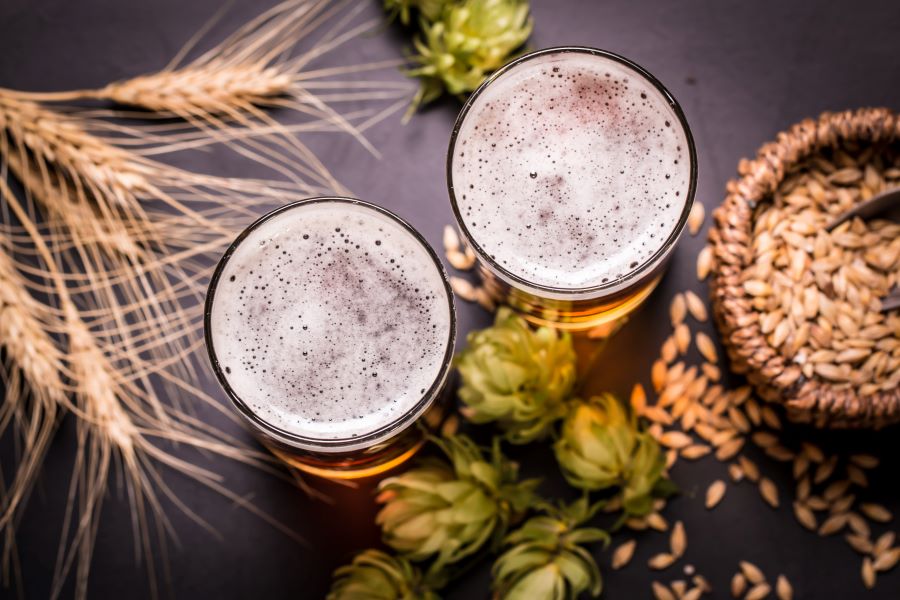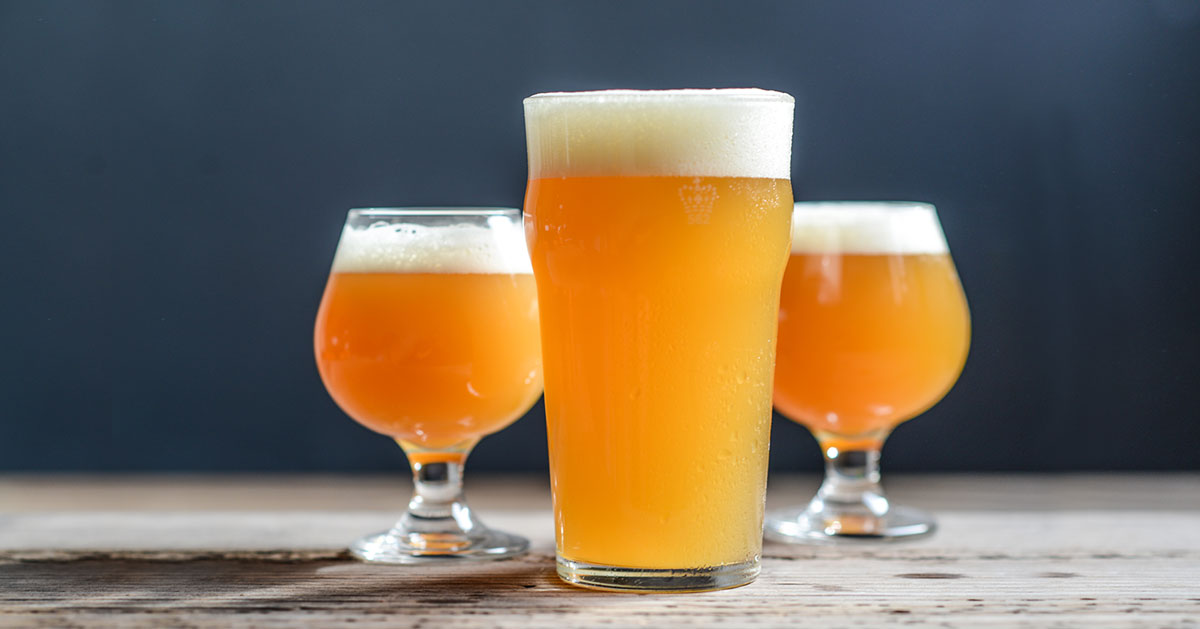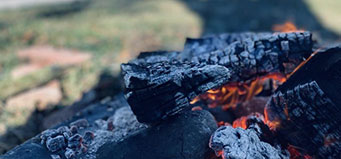What Is the Difference Between a Mash Tun and a Brew Kettle?
A mash tun produces the wort by mixing water and grain. You then transfer that wort into your brew kettle to boil it, add ingredients, and prepare it for fermentation. In this blog, we go into detail about mash tun brewing, the different options for this piece of equipment, and how to select the right beer making kit for your setup.
What Is a Mash Tun in Brewing?
Mash tuns are a container used in homebrewing to create the wort: a mixture of malted grains and water. Mash tuns don’t just combine ingredients into a mixture with a porridge-like consistency, they also regulate the temperature of the mixture. This is important because if the temperature is too cold, your mixture will come out runny. If the temperature is too hot, your wort will have trouble interacting with the yeast later on in the process.
To see an example of a mash tun, check out our 10 Gallon Cooler Mash Tun w/ False Bottom.
Do You Need a Mash Tun for Beer?
A mash tun is essential if you plan on brewing all-grain beer at home. That’s because the mash tun converts the starches of the grain into sugar, which the yeast will interact with to create alcohol.
If you’re brewing with beer-making kits (which is a fun and convenient option), then you may need a mash tun. This depends on whether you buy all-grain or extract kits.
All-grain kits require a mash tun to function properly. For example, you’d need this piece of equipment to brew the following kits at home:
- Hello There West Coast IPA All-Grain Beer Kit
- Dark Inception Imperial Porter All-Grain Beer Kit
- The CommUNITY American Lager All-Grain Beer Kit
You do not need a mash tun for extract kits because the fermentable sugar has already been extracted. If you’re looking to brew without needing a mash tun, try these kits:
- Hello There West Coast IPA Extract Beer Kit
- Anita Porter Extract Beer Kit
- Magic Dragon West Coast IPA Extract Beer Kit
Whether you need a mash tun or not is up to the process you’d rather use. Explore our options of online brewing supplies to set your home brewery up for success.
What Is a False Bottom in a Mash Tun?
A false bottom in a mash tun acts as a strainer to separate your wort from the leftover grain mash. When you’re finished mixing your grain and water together to extract the fermentable sugars, it’s time to transfer the wort to your brew kettle. False bottoms make this step easier because you can drain the wort directly into the brew kettle without needing an intermediate container to filter out the grains.
For example, the 10 Gallon Cooler Mash Tun w/ False Bottom makes transferring your worts as easy as turning a lever!
How Do You Use a False Bottom in a Mash Tun?
To set up a false bottom for a brew kettle setup, follow these steps:
- Create a stand for the false bottom by making a grid of interlocked metal pieces.
- Slide the stand into the container, then lay it flat.
- Place the false bottom on the stand.
If you’re using a different container, such as an igloo cooler, the process will be slightly different:
- Find a dome-shaped false bottom (most come flat).
- Place it at the bottom of the cooler. The highest point of the dome should be in the center.
- Use the spigot on the cooler to transfer the wort.
What Is the Difference Between a Mash Tun and a Mash Kettle?
The key difference between a mash tun and a mash kettle is that a mash kettle has greater capabilities. A mash kettle controls the temperature of the mixture to extract fermentable sugars. The mash kettle does the same with added mixing pedals. These pedals keep the mash in movement, so it’s easier to apply an even temperature. Because of this feature, mash kettles are often referred to as mash mixers.
What Is the Difference Between a Mash Tun and Lauter Tun?
A lauter tun has even more capabilities than both a mash tun and a mash kettle. Lauter tuns include rakes, which break up air bubbles. This creates a process in which air bubbles carry portions of the mash toward the top of the container. The rakes then break up those bubbles, causing that portion of the mash to sink. Like the pedals of mash mixers, using a lauter tun when brewing adds to the mobility of the mash to improve consistency at a finer level.
What Is the Difference Between Partial Mash and Steep?
Mashing, partial mashing, and steeping are all similar processes at different levels. Mashing has the strictest conditions, while partial mashing opens up a wider temperature range. Steeping uses pre-converted grains, which tightens up your options. Steeping also provides less depth of color and flavor than mashing or partial mashing, but it can be quicker.
Does a Mash Tun Need To Be Sanitized?
A mash tun, like all pieces of brewing equipment, should be sanitized before each and every use. This is because harmful bacteria can grow in leftover residue from previous batches. Use sanitizing products that are specifically designed for homebrewers to safely clean your gear without affecting the taste of your brews.
Need Homebrewing Equipment? Great Fermentations Has Your Back!
Whether you’re looking for a false bottom brewing setup, a brew kettle, all-grain beer ingredient kits, beer extract kits, or anything else for your home brewery, we’ve got you covered. Our online store is stocked for your convenience. Or if you prefer wandering the aisles, we’d be hoppy to see you at our Indianapolis location!



